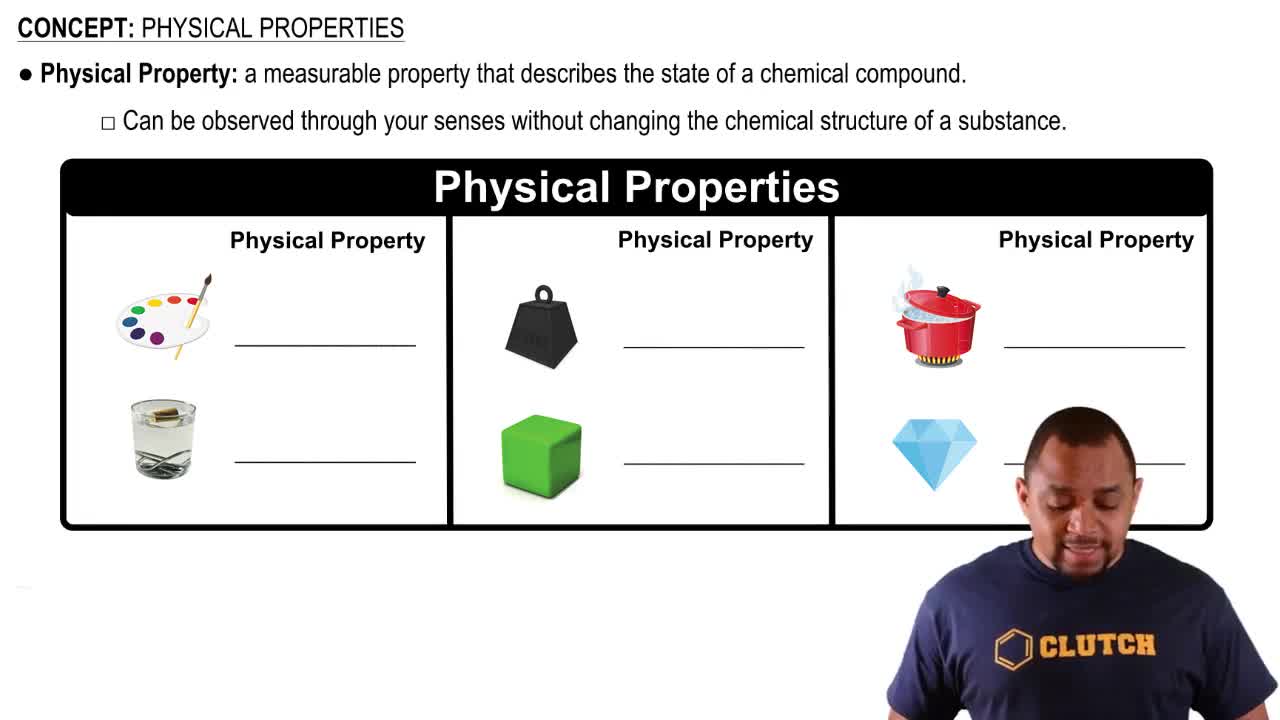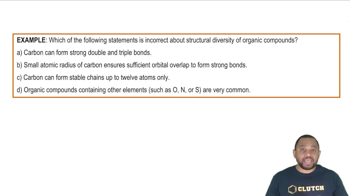Determine if each statement is true or false: (b) Substitutional alloys have 'solute' atoms that replace 'solvent' atoms in a lattice, but interstitial alloys have 'solute' atoms that are in between the 'solvent' atoms in a lattice.
Ch.12 - Solids and Modern Materials
Chapter 12, Problem 45c
Indicate whether each statement is true or false: (c) Nonmetallic elements are never found in alloys.
 Verified step by step guidance
Verified step by step guidance1
Understand the definition of an alloy: An alloy is a mixture of metals or a mixture of a metal and another element.
Recognize that nonmetallic elements can be part of an alloy: Nonmetallic elements such as carbon, silicon, phosphorus, and others can be incorporated into alloys to enhance their properties.
Consider common examples: Steel is an alloy of iron and carbon, where carbon is a nonmetallic element.
Analyze the statement: The statement claims that nonmetallic elements are never found in alloys, which contradicts the examples where nonmetallic elements are indeed part of alloys.
Conclude the truth value: Based on the understanding and examples, determine whether the statement is true or false.

Verified video answer for a similar problem:
This video solution was recommended by our tutors as helpful for the problem above.
Video duration:
1mWas this helpful?
Key Concepts
Here are the essential concepts you must grasp in order to answer the question correctly.
Nonmetals and Alloys
Nonmetals are elements that typically lack the properties of metals, such as conductivity and malleability. Alloys are mixtures of two or more elements, where at least one is a metal. While nonmetals are not commonly found in traditional metallic alloys, they can be present in certain specialized alloys, such as those used in semiconductors or specific chemical applications.
Recommended video:
Guided course

Nonmetal Properties
Properties of Alloys
Alloys are designed to enhance specific properties such as strength, corrosion resistance, or ductility. The inclusion of nonmetals can modify these properties, leading to improved performance in certain applications. For example, carbon is a nonmetal that is a key component in steel, significantly increasing its strength.
Recommended video:
Guided course

Physical Properties
True or False Statements in Chemistry
In chemistry, evaluating statements as true or false often requires understanding the definitions and characteristics of the elements or compounds involved. This involves critical thinking and knowledge of chemical principles, such as the behavior of nonmetals and their interactions with metals in various contexts, including alloys.
Recommended video:
Guided course

Introduction to Organic Chemistry Example
Related Practice
Textbook Question
Textbook Question
For each of the following alloy compositions, indicate whether you would expect it to be a substitutional alloy, an interstitial alloy, or an intermetallic compound: (a) Fe0.97Si0.03 (b) Fe0.60Ni0.40 (c) SmCo5.
Textbook Question
An increase in temperature causes most metals to undergo thermal expansion, which means the volume of the metal increases upon heating. How does thermal expansion affect the unit cell length? What is the effect of an increase in temperature on the density of a metal?
Textbook Question
State whether each sentence is true or false: (b) Metals have high electrical conductivities because they are denser than other solids.
